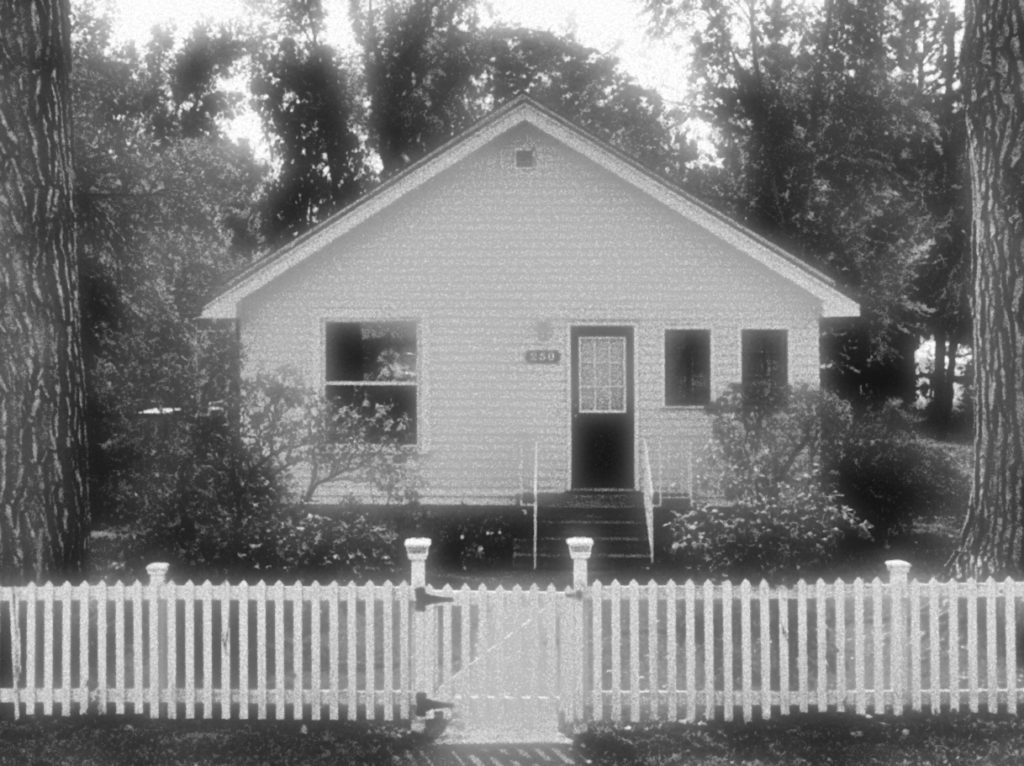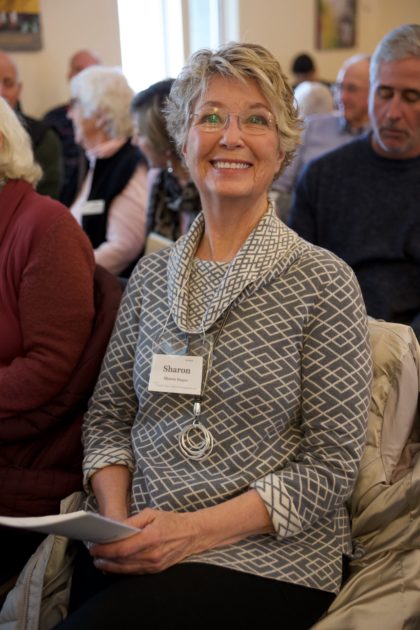Our Stories: Niwot Days
by Sharon Hagan

One by one, the old farmers’ homes were turning over to another generation of families. Even as the town grew younger, it remained alive with a farm community ethos. Near the driveway of Mrs. Tilbury’s house, a cardboard sign invited neighbors to stop by for fresh eggs. Across the highway we could drive straight to an old barn for a gallon of raw milk with cream on top, slip a dollar bill into a jar inside the Frigidaire, and drive off. Back home, we’d make butter from the thick, golden layer atop the skim milk, and save a little cream for strawberries when we had them. Tractors still crawled down the town’s dirt roads en route to the fields.
Across the street, between our little house and the highway, rail cars laden with sugar beets rolled to a stop waiting for right-of-way on tracks that took them to the Longmont sugar beet factory. Melon-size beets that voluntarily rolled off the cars were fair game for kids. At Tom Theobald’s honey farm down the way, donkeys brayed at the fence, delighting onlookers. “Eeyore” was a favorite, especially when he made appearances at neighborhood birthday parties. Residents old and young walked to the post office on Murray St. where, as they picked up their mail, they also picked up town news and gossip from Mrs. Boone, the postmistress.
We were among the first of the new families to settle in this farm community, outsiders from New York City via California, eager to begin a Colorado life with our two boys, David (2 years) and Alex (2 months.) Our five-room, 1200 sf bungalow was a treasure we could afford. A $2000 insurance payout from my husband Andrew’s motorcycle accident and a small loan from his mother provided the 20% needed to buy our first home in Niwot, a town where our boys would find lasting friendship, develop self-reliance and have their first taste of community.
David and Alex shared a tiny room that grew smaller with each birthday. At first there was a crib and a twin bed, then two twins, Tonka trucks, Ferdinand the Bull, an army of matchbox cars, and Stretch Armstrong Man, an early action figure whose giant gel-filled body could be aggressively stretched out of proportion and still stay in one piece. Sharing for my boys was not easy. Only 22 months separated them, but their personalities and temperaments often seemed worlds apart. As they continued to hone their sibling bonds and rivalries, rural life had a role in forming them.
The year we bought the white clapboard house at 250 Murray St., one of the owners had just died. The garage still held early 20th century farm implements, like scythes and a hand plow. The owners also left behind their tastes in the form of a plaster bird bath set in a poured-concrete pond painted sea-green. A poster of John F Kennedy tacked to the inside of a kitchen storage cupboard would stay there for years as a tribute both to the giant we had lost in 1963 and to the couple whose home we now occupied. The property came with a well and water rights—plus city water. It also came with a quarter acre of adjacent land overgrown with alfalfa. Back behind the garage grew a patch of wild horseradish. We didn’t know what to do with either commodity, but the garage itself assumed a new life as an artist studio for my husband’s sculpture projects.
Our free-range kids grew to know every inch of the fields and byways. By age 4, David had learned the hazards of climbing to the top of the chain-link fence surrounding our property, at least once landing in the doctor’s office for stitches. Neighborhood kids pedaled up and down the dusty roads and behind the giant road grader that arrived twice a year to smooth out the bumps and ruts left behind after the rains. A replica road grader worked similar hours in the sandbox near the back door. The boys would ride two blocks to the firehouse to inspect the fire engines, hoping a volunteer fireman might invite them to climb up and take a seat. When Alex won the school’s fireman-sponsored art contest, he proudly rode the firetruck in the town’s annual Fourth of July parade. At age 6, he had already decided his future.
Not long after getting settled, a local pastor rapped on our door with a cheerful welcome to town and invitation to attend a service at his church. Stunned by what seemed to us urbanites an odd intrusion, I said we are not church goers my husband is Jewish but thank you for your invitation. Years later, a neighbor boy from Cub Scouts invited David to go to that same church one Sunday. He wanted to go, so, true to our liberal leanings we said okay he was old enough to decide. Reportedly, the kids’ only Sunday School activity was coloring and not much fun. We were all learning the ways of our community.
Two other young families had joined the neighborhood around the same time we did, each with a daughter near our boys’ ages. The three families soon bonded on a path that led to long friendships. The mothers—a poet/novelist, an importer of Japanese art, and this unemployed teacher who sold Avon products for spare change—spent most of our days at home with toddlers. We recruited two more mothers to form a playgroup, one that lasted until the children were ready for Kindergarten. Each mother planned one morning a week for the six children. This meant we each had four, free, glorious mornings a week. On my playgroup days, my charges were known to ride to imaginary places in trains made of Avon boxes, sing songs into our reel-to-reel tape recorder, or paint at the kitchen table.
Our house sat along an alleyway badly rutted from the trucks delivering goods to and from Ralph’s Auction on Main Street. Little boys could scoot right in the back door of Ralph’s for a look-see at treasures like pocket knives or rusty metal toys. Over time, we furnished our living room from the auction house: two black faux-leather love seats that made excellent trampolines, and an old upright piano that tempted little fingers to pluck out little tunes. Piano sounds wafting toward the street often drew the attention of a disabled neighborhood teenager who would ask to come in and play the piano. My boys, at first puzzled about how this boy fit into our life, learned to accept a stranger and his discordant but temporary take-over of the keyboard.
Thus we continued to develop our roots in community soil. The boys joined troops of Cub Scouts and Indian Guides, led by local parents. In the mid-70s, in addition to its reputation as an antique mecca, Niwot was becoming a hotbed for street vendors, artists, and musicians. When the flatbed truck rolled up 2nd Avenue on a summer morning, musicians would set up their stage with microphones and amps for the all-day festivities. Kids ran around while artists displayed their wares and bands encouraged dancing in the street. Firemen stood at the ready for potential mishaps.
The Left-Hand Grange, a neighborhood hub on Main St., brought people of all ages together. My husband’s long hair and eastern European accent were not enough to deter local men from inviting him to join the Grange, an organization whose original mission was to preserve family farms. We sometimes attended community potlucks at the Grange, where we also heard for the first time an emerging bluegrass band, the now famous “Hot Rize.”
Nothing stays the same in life except memories. Although our seven years in Niwot saw a decline in farming, an influx of younger families, the birth of an artist community, a new coat of house paint, the resignation of one U.S. president and lines at the Grange for the election of two others (Ford, Carter), our time in the old town of Niwot has stood still. We three mothers, having once shared our children’s formative years, the dissolution of our marriages, and colorful career adventures, now share the joys and vicissitudes of aging. Our “kids”—David, Alex, Kia and Riva—remain friends, inclined on occasion of their rare get-togethers to reminisce about their Niwot days.

